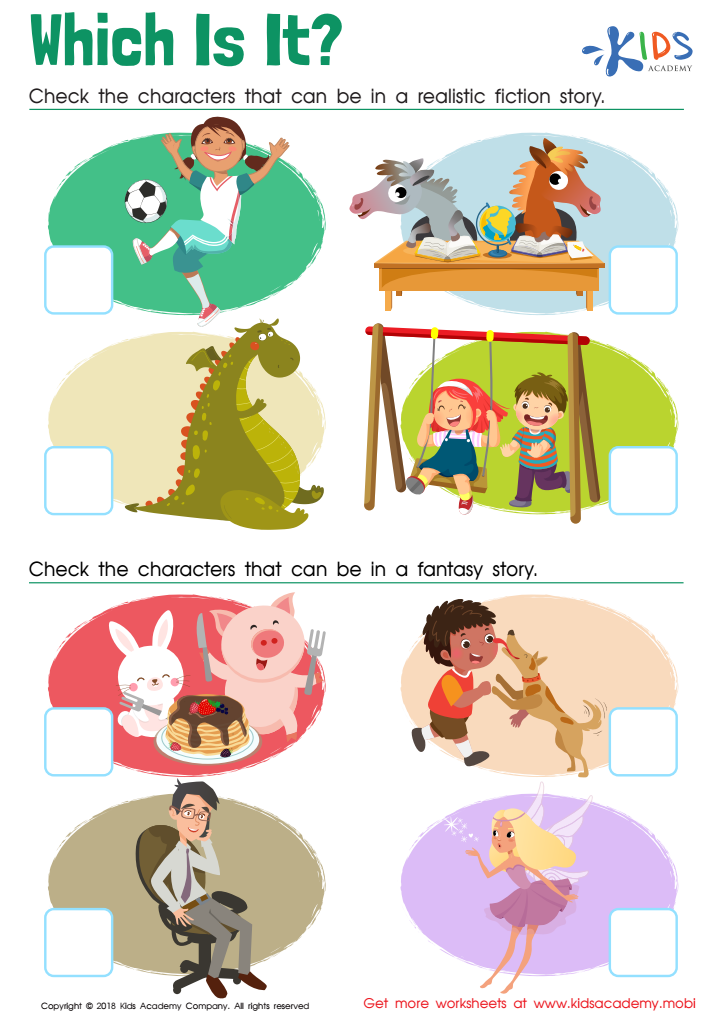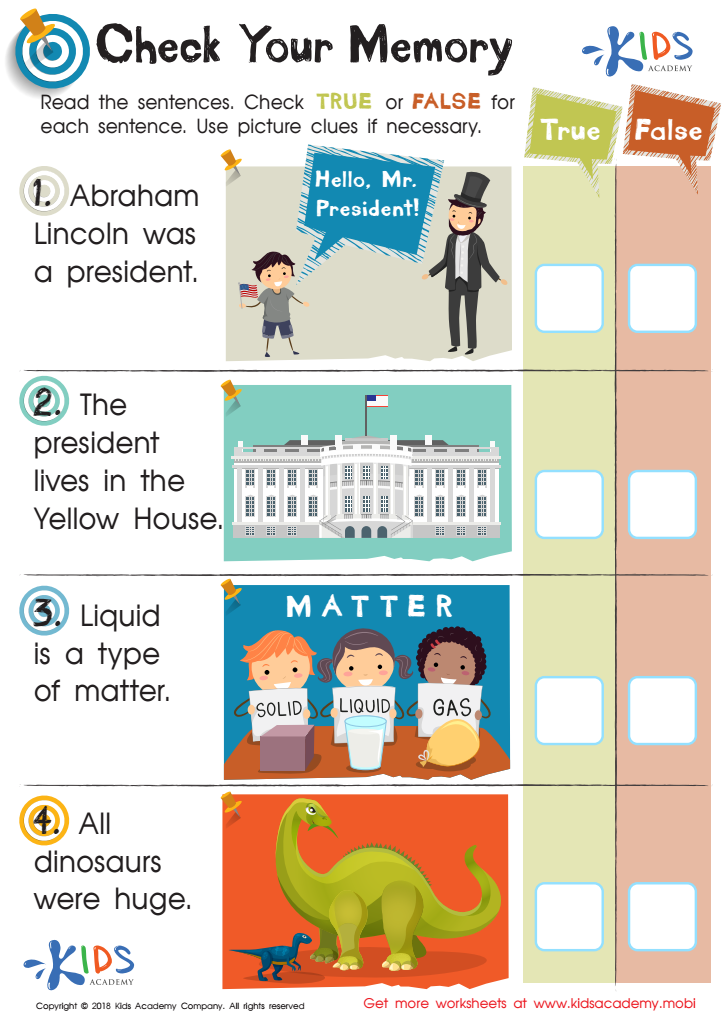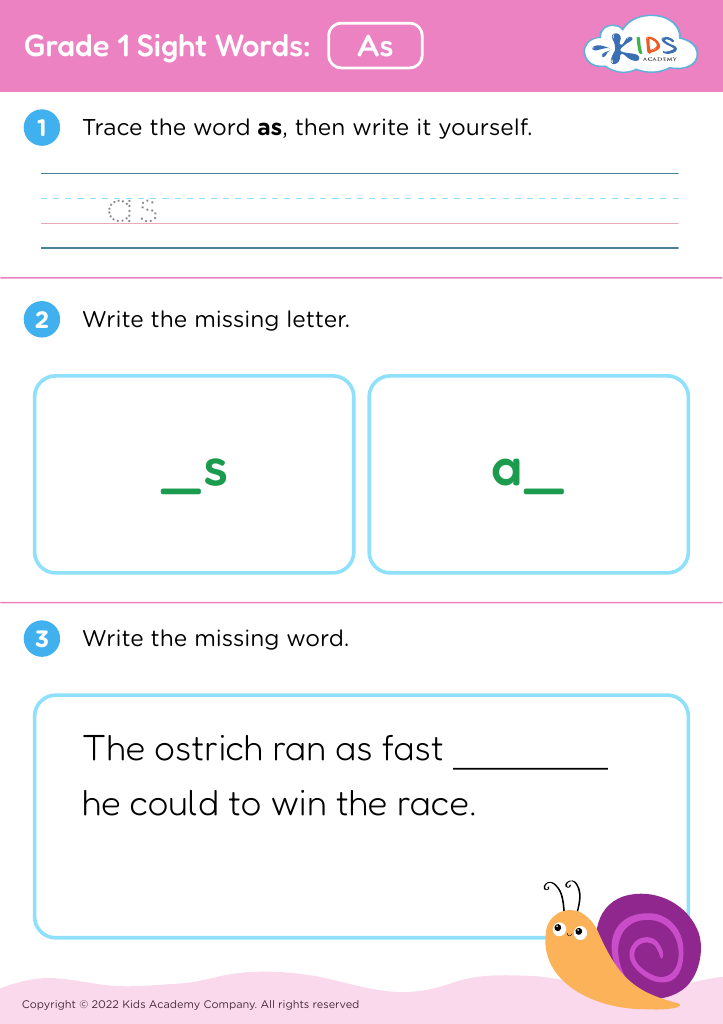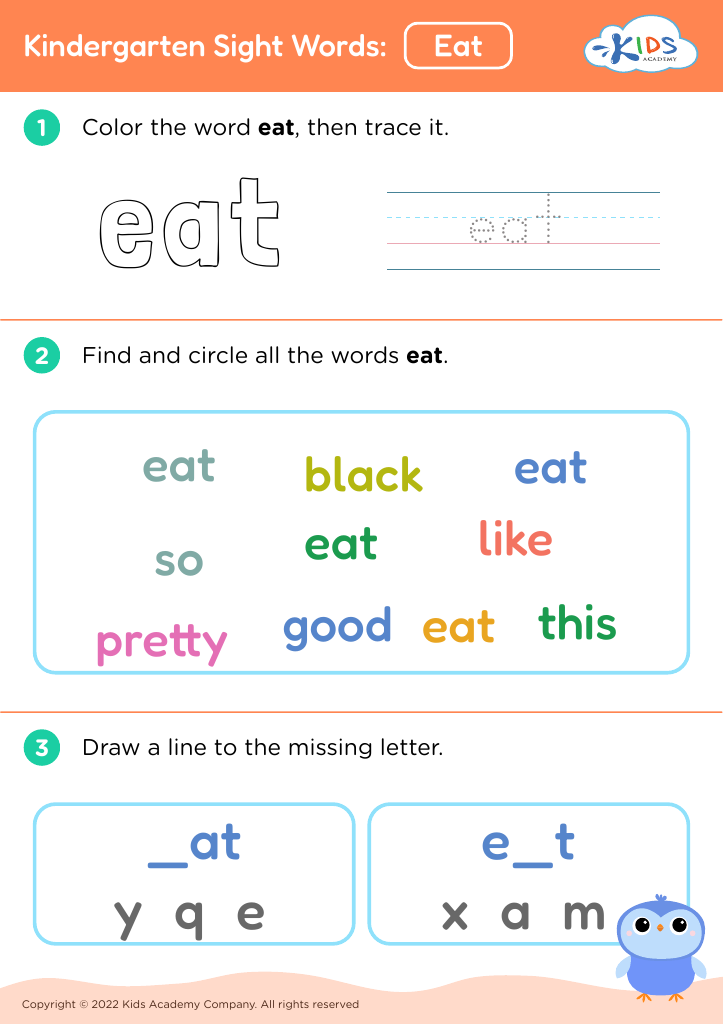Shape identification Reading Worksheets for 6-Year-Olds
4 filtered results
-
From - To
Enhance your 6-year-old’s literacy and shape recognition skills with our engaging Shape Identification Reading Worksheets! These worksheets are thoughtfully designed to combine reading practice with geometric shape identification, fostering both language and cognitive development. Kids will explore various shapes through fun texts and interactive activities, encouraging them to read and identify shapes simultaneously. Perfect for classroom or at-home learning, our easy-to-use worksheets cater to young learners’ developmental needs while keeping them entertained. Help your child build essential reading and shape recognition skills in a fun, stress-free way! Start shaping their learning journey today with our exciting resources!


Which Is It? Worksheet


Check Memory Worksheet
Shape identification is crucial for 6-year-olds as it forms a foundational skill for their overall cognitive development. At this stage, children are not only absorbing basic academic concepts, but they are also learning to understand the world around them. Recognizing shapes helps enhance their visual perception, improving their ability to differentiate between various objects and form associations.
Moreover, shape identification is linked to essential early math skills. It lays the groundwork for understanding geometry, spatial relationships, and measurement. When children can identify and categorize shapes, they begin to understand properties such as size, angles, and symmetry, which are critical for later mathematical success.
In addition, engaging in shape-related activities fosters critical thinking and problem-solving skills. It encourages creativity as children manipulate shapes in art or in constructing objects. Teachers and parents should also note this ties to language development; discussing and describing shapes increases vocabulary and comprehension abilities.
Lastly, promoting shape identification can bolster confidence in young learners, as mastering this skill can yield a sense of accomplishment. By nurturing an interest in shapes, parents and teachers play an essential role in children's foundational learning and lifelong academic journeys.
 Assign to My Students
Assign to My Students






















